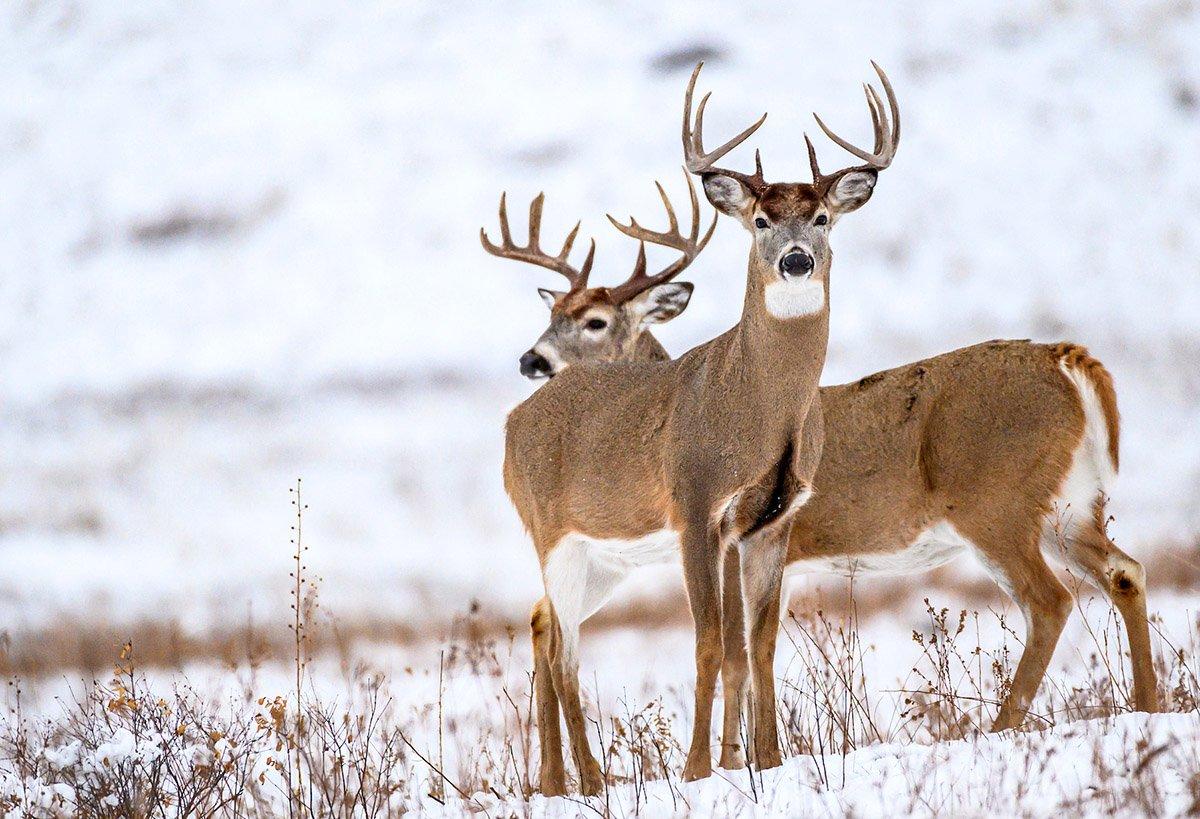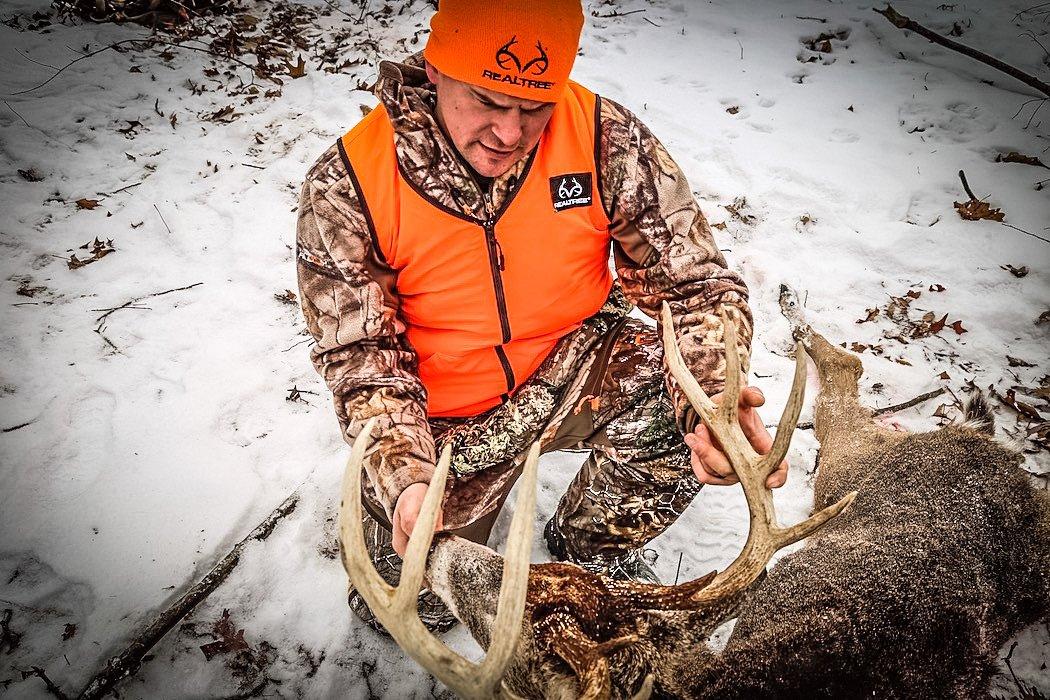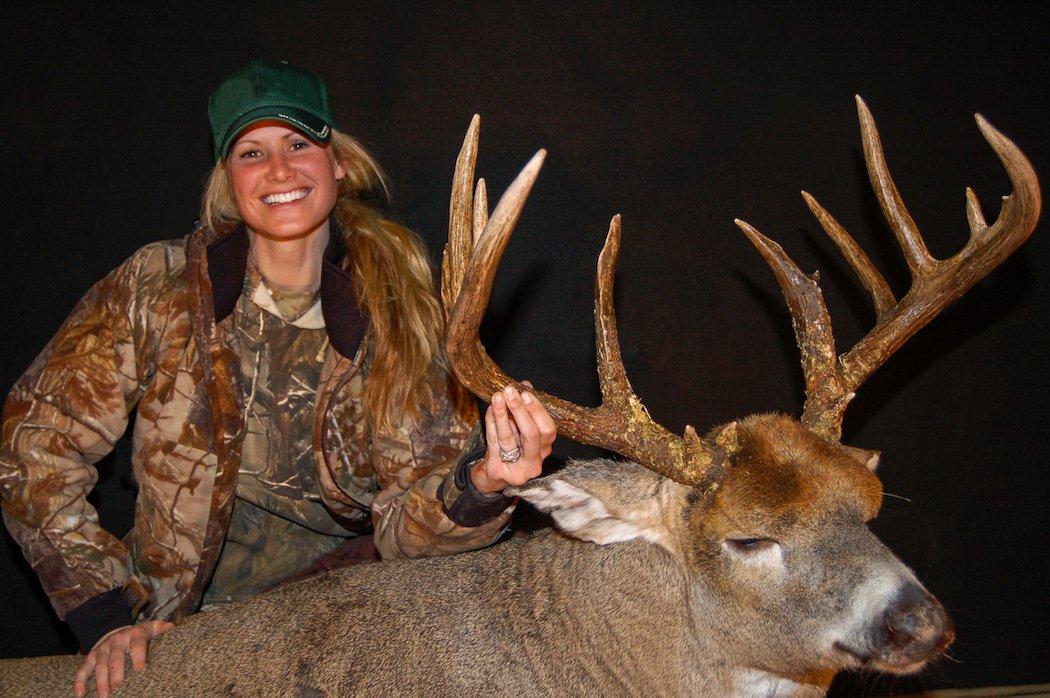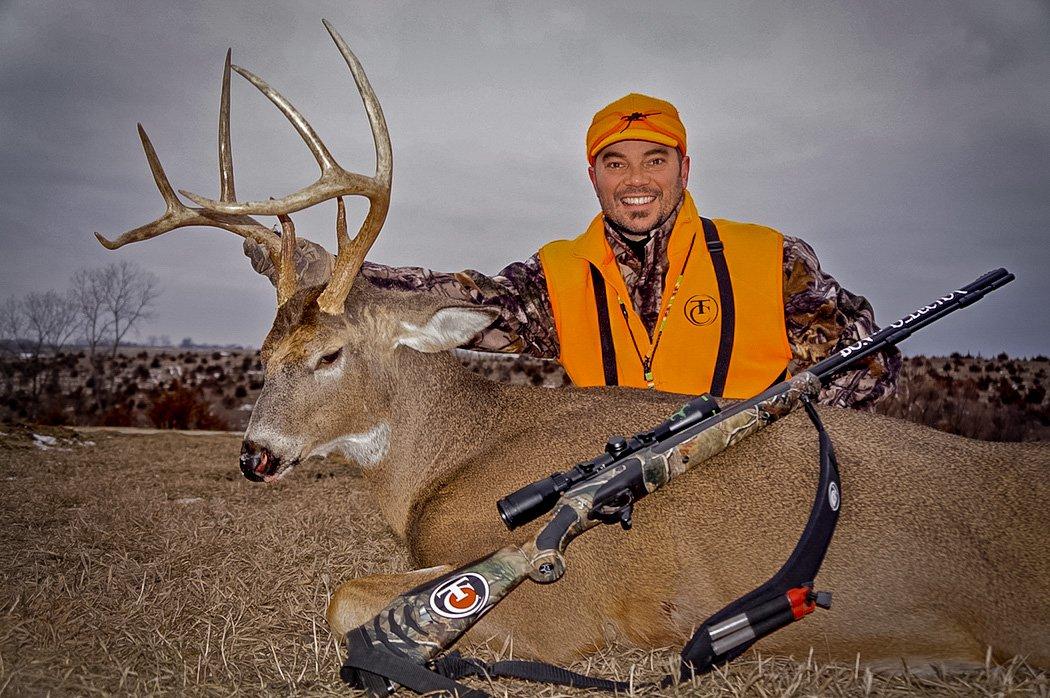Three experts weigh in on how to hunt a late-season buck that's not making things easy
It might seem as though opening day was just here, but an entire season has passed, and now you're staring down the barrel of the last weekend. But don't give up hope. There's still time to bag a buck, and we checked in with three of our pro staffers to get their advice.
The Scenario
Every deer hunt is a little different, but some scenarios seem to be recurring. The following is a version of one situation many hill-country hunters encounter. I know I've run into something similar several times.
You're hunting a small farm that has one mature, shooter buck on it. It's a quarter timber, a quarter thick, early successional growth and half cut cornfield with waste grain. The timbered ridge overlooks the early successional growth below it. A creek separates the thick cover from the cut corn.
The target buck generally beds two-thirds of the way up the timbered ridge in some blowdowns, but it's unpredictable once it leaves there. Sometimes it moves down to the cornfield during daylight, but usually, it doesn't make it out there until after dark.
The only constant is where this deer beds, but it has the terrain advantage. It can see the thicket below the ridge, and it's hard to get close without bumping him. Given that you have two days to pursue this deer, what is the game plan?
We posed this scenario to three of our Realtree pro staffers. They analyzed it, and responded with three different plans. Let's dig in.
Observation Sit First, Then Move Deeper
Pro Staffer: Anthony Virga, All Things Hunting TV
I think the most likely setup is along the creek adjacent to the thick cover, Virga says. Deer use creeks and creek bottoms for many reasons. I'd put myself where I could monitor bedding, but still have an opportunity to release an arrow at a major creek crossing heading toward the food source.
That's a great point, because that buck could be staging up at the creek crossing until dark, and then moving out into the cornfield.
I know it sounds crazy to do an observation sit with only two days left in the season, but you can make one last move based off what you saw the previous day and make it count on the last, Virga says.
He encourages the hang-and-hunt approach for both days. He also points out that even though the big one is bedding up higher, other deer will likely be bedded in the thicker stuff below the ridge, especially this late in the season.
Go back to notes from past seasons on the same farm, Virga says. Compare this to what deer did in the past. This buck might do the same thing.
He encourages hunters to map everything out on a dry-erase board or piece of paper, just as an offensive coordinator would before a football game. Visualize it, and then execute.
It's standard, but you should also consider the possibility that buck might cross your path well after you're set up or after you leave, he says. It'll make the final day a lot tougher if the buck knows it's being hunted.
Hunt the Thick Stuff
Pro Staffer: Rachelle Hedrick, Smoke Hole Outfitters
The rut is over and they're trying to put body weight back on, Hedrick says. Colder temps are making them get up and feed, but you want to get as close to the bedding area as possible.
She encourages hunters to slip into that transition area that's between the wooded ridge and the creek. That's the play, all day long.
It's a tricky scenario, but the only constant is the food source, and you just have to pray the wind is right, she says. You can't wait for the perfect direction. Choose the best available stand location and entry route according to the wind. Go in lean, slow and get in tight. Camp out on the best-looking trail that leads to the food.
Hunt Mornings and Evenings
Pro staffer: Nick Mundt, Bone Collector TV
I would get the closest I can get to the best possible travel route to and from bedding, Mundt says. That way, I'd catch him most likely right before he beds or right after he comes out of the bedroom to go and feed. It gives me more of a chance to use the daylight to my advantage since pressured deer usually travel late in the evenings and early in the mornings.
Sometimes on a field edge, it's hard to escape your stand location without bumping deer, Mundt says. He says hunting in the thick stuff provides a good entry and exit route. Slip through whichever part of it is best for the wind, but keep in mind visual concealment, too. Follow a path that shields you from that buck's eyes upon arrival and departure, and don't break cover.
This is a tough situation, Mundt says. Sometimes you hunt hard, make the right moves and luck isn't on your side. Or, luck can be your friend and that target buck — be it a spike or 183-incher — rides home.
The Brow Tines and Backstrap Plan
My plan is a combination of all three. Like Hedrick, I'm not waiting for the perfect wind. It might not come before the bell tolls. It's hammer time. And, like Mundt, I'm hunting mornings and evenings.
In the mornings, slip in two or three hours before legal light starts, and pick an entry route that's well away from the cornfield and the thick, nasty cover by the creek. Skirt the property line and slip in on the backside of the ridge, opposite of where the buck beds.
Upon entry, slowly crest the rise and ease down the side the buck beds on. Get just low enough to prevent sky-lining but still high enough to shoot down toward its bed. Hang and hunt with a lightweight lock-on or climbing stand. Use whichever your stealthiest with. Sit there until almost lunch. If the buck shows up, game over. Wind direction won't matter once the sun rises because thermals will carry scent straight up and away.
If it beds elsewhere that morning, glass everything below for a couple hours. An antler tine or ear might give that deer away. Scout from above to determine where the afternoon sit might be. Then, slip down and exit across the backside of the ridge. This should shield you from bedded deer on the creek side of the hill.
For the afternoon sit, do exactly the opposite. Go between the cornfield and bedding cover. If the banks are high enough, access along the creek. This should eliminate most ground scent and keep deer from seeing you. If the banks aren't high enough, or topography won't allow creek access, slowly slink through the thick stuff instead.
Scout for tracks along the creek bank. You'll find that big buck's footprints. Once you do, get between the creek and the thick stuff below the ridge. Use the hang-and-hunt method or a climber.
The next morning, repeat the same morning plan. That afternoon, repeat the same process as the evening before, but push deeper into cover and follow the trail back as far as you dare.
Alas, these are the final days. At this point, if you don't get that buck, he'll probably still be around next fall. And that will get here soon enough.
Don't Miss: The Ultimate Late-Season Trail Camera Plan
Check out more stories, videos and educational how-to's on deer hunting.











